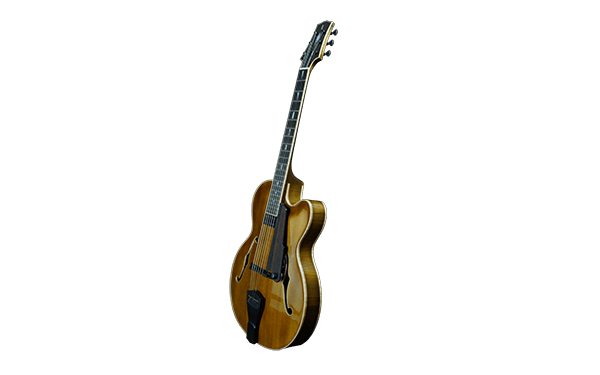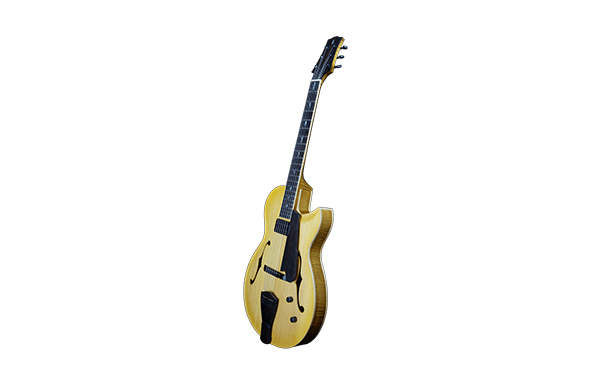
EJIMA ARCHTOP GUITARS
Features and designs from the viewpoint of player
Relatively small body for easy handling
Both 17’’ and 16’’ models have actually smaller body size by 1/2’’ at lower bout, namely 16.5’’ and 15.5’’ respectively.
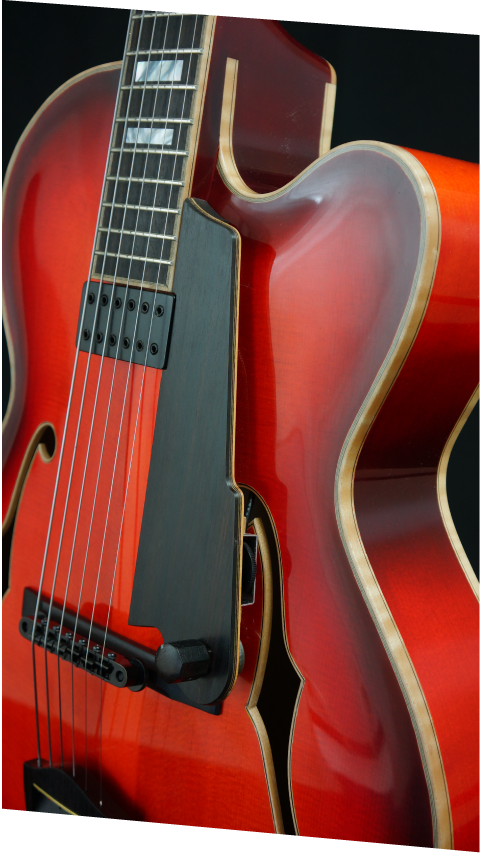
Three-piece neck as standard
From my own experience, three-piece neck is more stable against daily changes in atmospheric conditions compared with two-piece or one-piece neck. It requires less frequent truss rod adjustment.

Asymmetric neck heal
Neck heal is made thinner at high note side to improve playability at high positions.
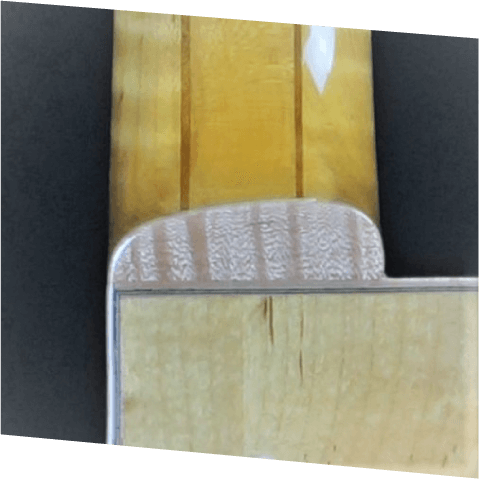
Concealed tone pot
Disk type potentiometer is installed underneath the finger rest for tone control to refrain from interfering picking.
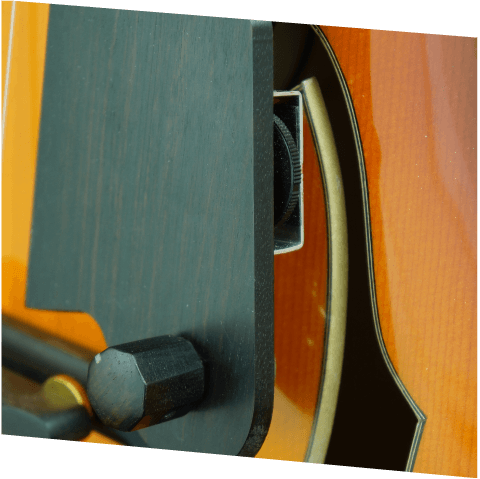
Strings grounding
Though traditional tail gut type tailpiece is employed, strings are grounded directly on the output jack to reduce noise when amplified.
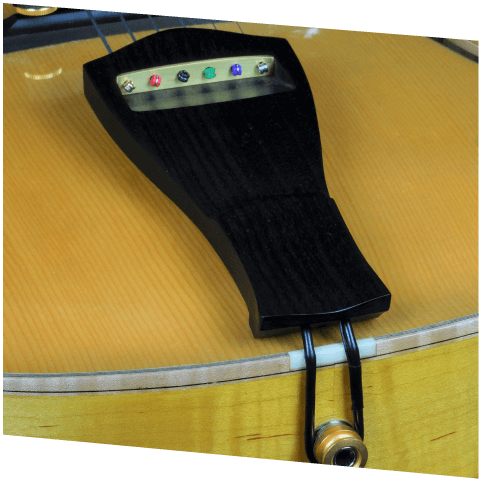
Nitrocellulose lacquer finish
Nitrocellulose lacquer is popular finish for guitars even today. Main reason seems that it often used in vintage instruments rather than its primary property of thin and stiff film. In my opinion, nitrocellulose has hygroscopic property and fits very well with human skins. German nitrocellulose resin used to be used for toothbrush handle because of this property before replaceable synthetic plastic was developed. In my guitar building, only nitrocellulose lacquer is used for top coating regardless of middle and base coating material.


